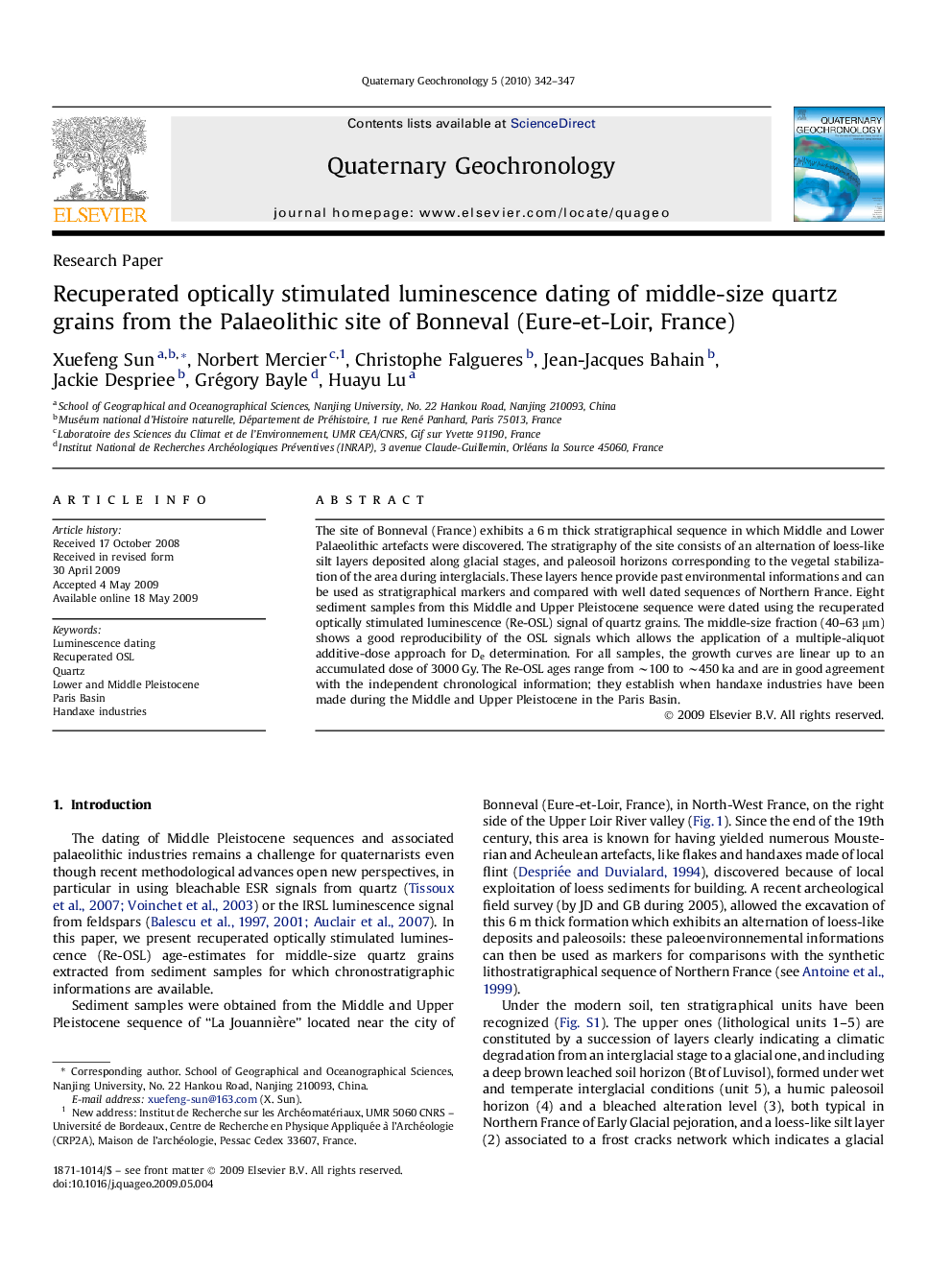| Article ID | Journal | Published Year | Pages | File Type |
|---|---|---|---|---|
| 4725539 | Quaternary Geochronology | 2010 | 6 Pages |
Abstract
The site of Bonneval (France) exhibits a 6 m thick stratigraphical sequence in which Middle and Lower Palaeolithic artefacts were discovered. The stratigraphy of the site consists of an alternation of loess-like silt layers deposited along glacial stages, and paleosoil horizons corresponding to the vegetal stabilization of the area during interglacials. These layers hence provide past environmental informations and can be used as stratigraphical markers and compared with well dated sequences of Northern France. Eight sediment samples from this Middle and Upper Pleistocene sequence were dated using the recuperated optically stimulated luminescence (Re-OSL) signal of quartz grains. The middle-size fraction (40-63 μm) shows a good reproducibility of the OSL signals which allows the application of a multiple-aliquot additive-dose approach for De determination. For all samples, the growth curves are linear up to an accumulated dose of 3000 Gy. The Re-OSL ages range from â¼100 to â¼450 ka and are in good agreement with the independent chronological information; they establish when handaxe industries have been made during the Middle and Upper Pleistocene in the Paris Basin.
Keywords
Related Topics
Physical Sciences and Engineering
Earth and Planetary Sciences
Geochemistry and Petrology
Authors
Xuefeng Sun, Norbert Mercier, Christophe Falgueres, Jean-Jacques Bahain, Jackie Despriee, Grégory Bayle, Huayu Lu,
